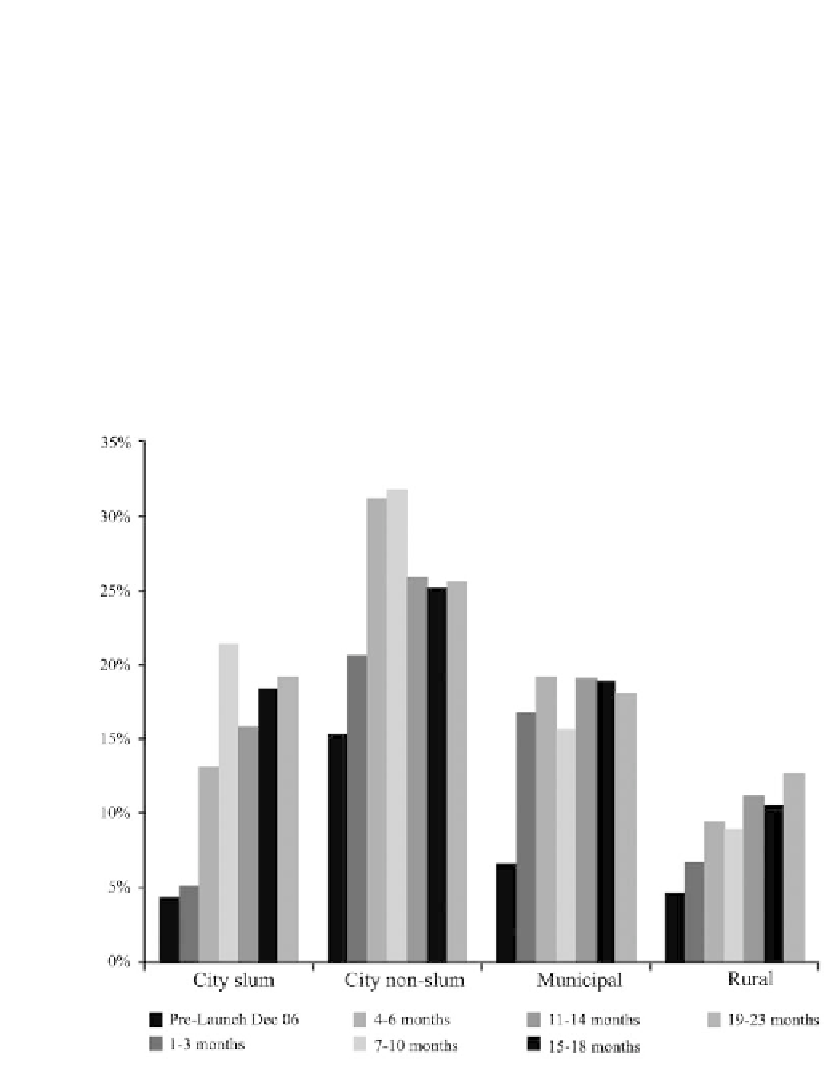Environmental Engineering Reference
In-Depth Information
As illustrated in Figure 3, the actual use of zinc falls far short of awareness.
With the exception of urban nonslum children, few received zinc prior to the na-
tional mass media launch. By the second year of the national scale-up campaign
approximately 25-30% of urban nonslum, 15-20% of urban slum or municipal, and
9-13% of rural children were receiving zinc for their diarrheal illness episode. In
urban nonslum and municipal households the use of zinc levelled off by the end of
the fi rst year, while a steady increase in zinc coverage has been observed in rural
and urban slum areas. Table 1 summarizes the proportion of children who received
zinc stratifi ed by the type of provider seen during the fi nal, 19- to 23-months sur-
vey round; this is further subgrouped by whether a tablet or syrup formulation
was received. Children seen by a private, MBBS provider were the most likely to
receive zinc, at nearly 40%. Dispersible zinc tablets accounted for 60% of all zinc
purchased.
Figure 3.
The proportion of children receiving zinc treatment by location of household before and
up to 23 months following the onset of the mass media campaign.
















Search WWH ::

Custom Search